A lick of warmth
is just catching the bare treetops.
The grass still curiously torpid -
minute crystals holding the memory
of the night.
The slow flap of wing
beating energy back into small bodies.
Bright eyed and nervous.
The stillness is unnerving.
Beautiful, breath removed.
On stone and tile, white creeps away
as the sun rises.
Water again remembers how to race.
There is something brave about standing in a field at the raw end of the winter, holding on to a stick of ‘hedge’ with its bare roots shivering and startled. Spring still feels out of reach, but here we are again, 12 brave souls, enjoying the feeling of hope that digging earth at this time of year brings.
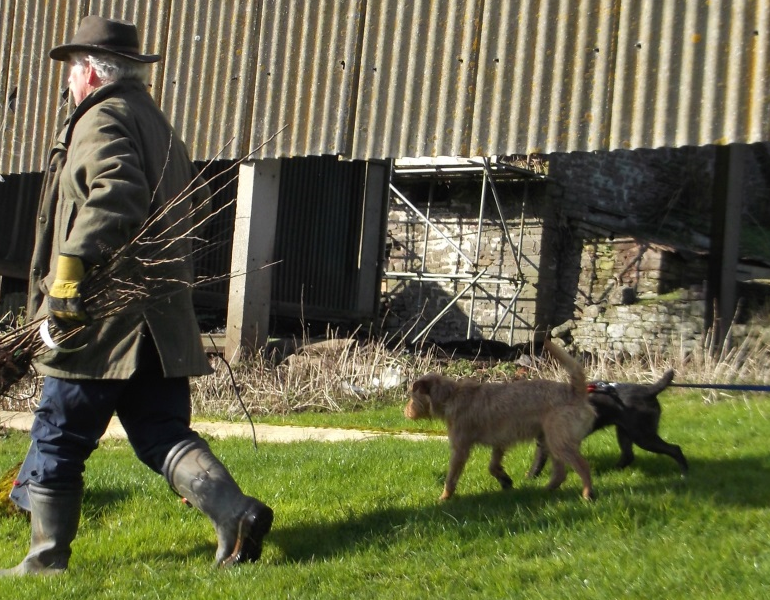 Hedge planting feels like a ritual, performed by landowners, volunteers, school children - responding to the call to plant rather than uproot. Those unsightly plastic guards, a tell-tale sign of recent human activity in field margins, can be forgiven for the vital protection they bring to plants in those first critical years, when weather, weeds, animals and humans can potentially wreak havoc on carefully planted hedge rows. Here at Llwyn Celyn, we are into our second year of hedge planting - translating the coloured dashes and blobs on the architects plan into a tantalising, if small and twiggy, promise of a wildlife haven.
Hedge planting feels like a ritual, performed by landowners, volunteers, school children - responding to the call to plant rather than uproot. Those unsightly plastic guards, a tell-tale sign of recent human activity in field margins, can be forgiven for the vital protection they bring to plants in those first critical years, when weather, weeds, animals and humans can potentially wreak havoc on carefully planted hedge rows. Here at Llwyn Celyn, we are into our second year of hedge planting - translating the coloured dashes and blobs on the architects plan into a tantalising, if small and twiggy, promise of a wildlife haven.
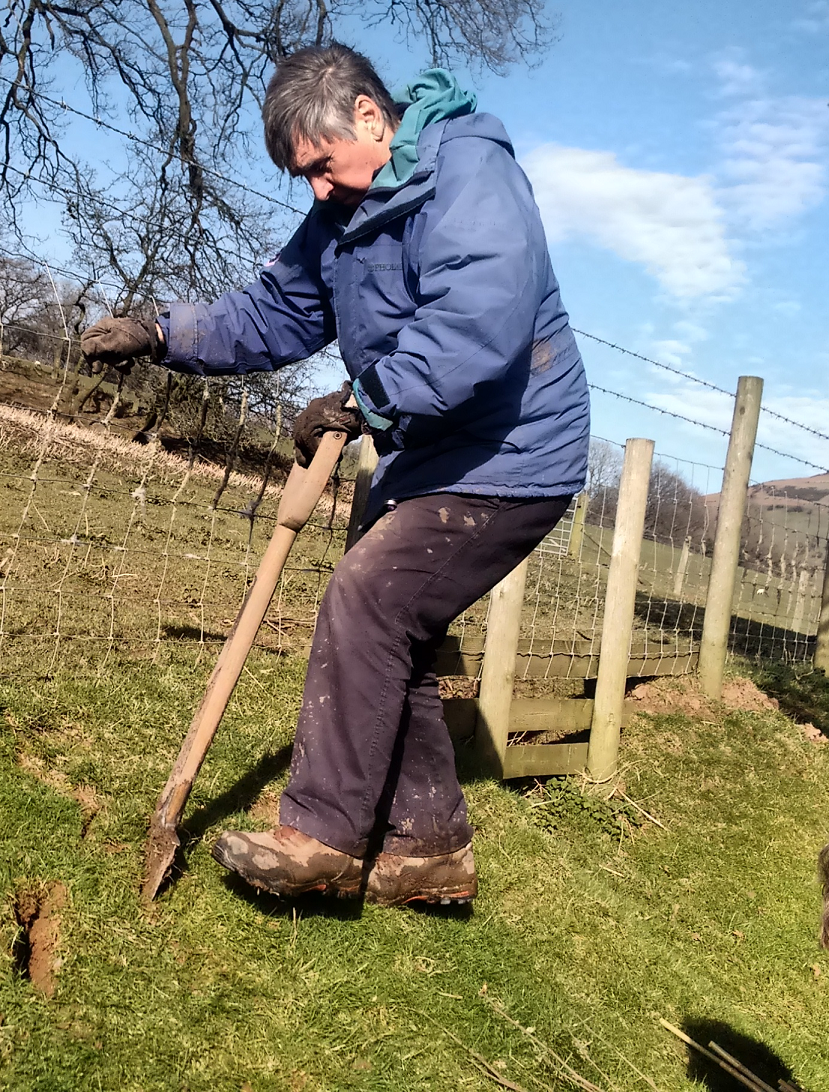 The hedge provides shelter for animals, delineation and a source of food for our resident bats. Our ecologist has been monitoring the site now for years to understand which bat species are roosting and where. Lesser Horseshoe, Common Pipistrelle and Soprano Pipistrelle bats have made good use of a semi redundant building and we will ensure that the bats do not lose out when the restoration work starts. By creating and adapting spaces on site we can encourage the bats to roost safely away from disturbance and light. Our new hedge of full native species will entice moths and other insects, which the bats will forage on, and create a food corridor for them to follow when travelling to and from the building. A wild flower meadow will be established which will introduce yet more insect friendly plants on to the site.
The hedge provides shelter for animals, delineation and a source of food for our resident bats. Our ecologist has been monitoring the site now for years to understand which bat species are roosting and where. Lesser Horseshoe, Common Pipistrelle and Soprano Pipistrelle bats have made good use of a semi redundant building and we will ensure that the bats do not lose out when the restoration work starts. By creating and adapting spaces on site we can encourage the bats to roost safely away from disturbance and light. Our new hedge of full native species will entice moths and other insects, which the bats will forage on, and create a food corridor for them to follow when travelling to and from the building. A wild flower meadow will be established which will introduce yet more insect friendly plants on to the site.
The species we choose to plant are critical to the hedges impact. A mix of natives will create a long season of food for various mammals and insects. Hazel will be the earliest into flower, followed by blackthorn, then hawthorn, and spindle. Finally the guelder rose will extend the flowering season into the summer. Then it won’t be long before berries start to appear, to be gathered by animals and humans alike.
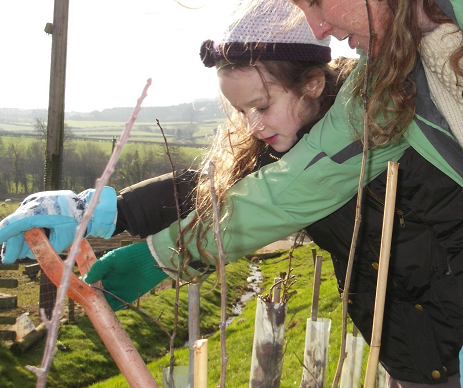 Llwyn Celyn is a complex project, with many different types of building and uses to consider and its immediate landscape setting is equally important to how it eventually settles back in to the larger narrative of hills and valleys. It is comforting to think and work on many scales – from the hefty stone blocks and timber roof trusses of the farmhouse, the void of the Threshing Barn, crevices and cracks for roosting and nesting creatures, the architecture of thorns, flowers and berries and the tiny insect life that they will in turn support.
Llwyn Celyn is a complex project, with many different types of building and uses to consider and its immediate landscape setting is equally important to how it eventually settles back in to the larger narrative of hills and valleys. It is comforting to think and work on many scales – from the hefty stone blocks and timber roof trusses of the farmhouse, the void of the Threshing Barn, crevices and cracks for roosting and nesting creatures, the architecture of thorns, flowers and berries and the tiny insect life that they will in turn support.
At Llwyn Celyn we planted:
Hazel
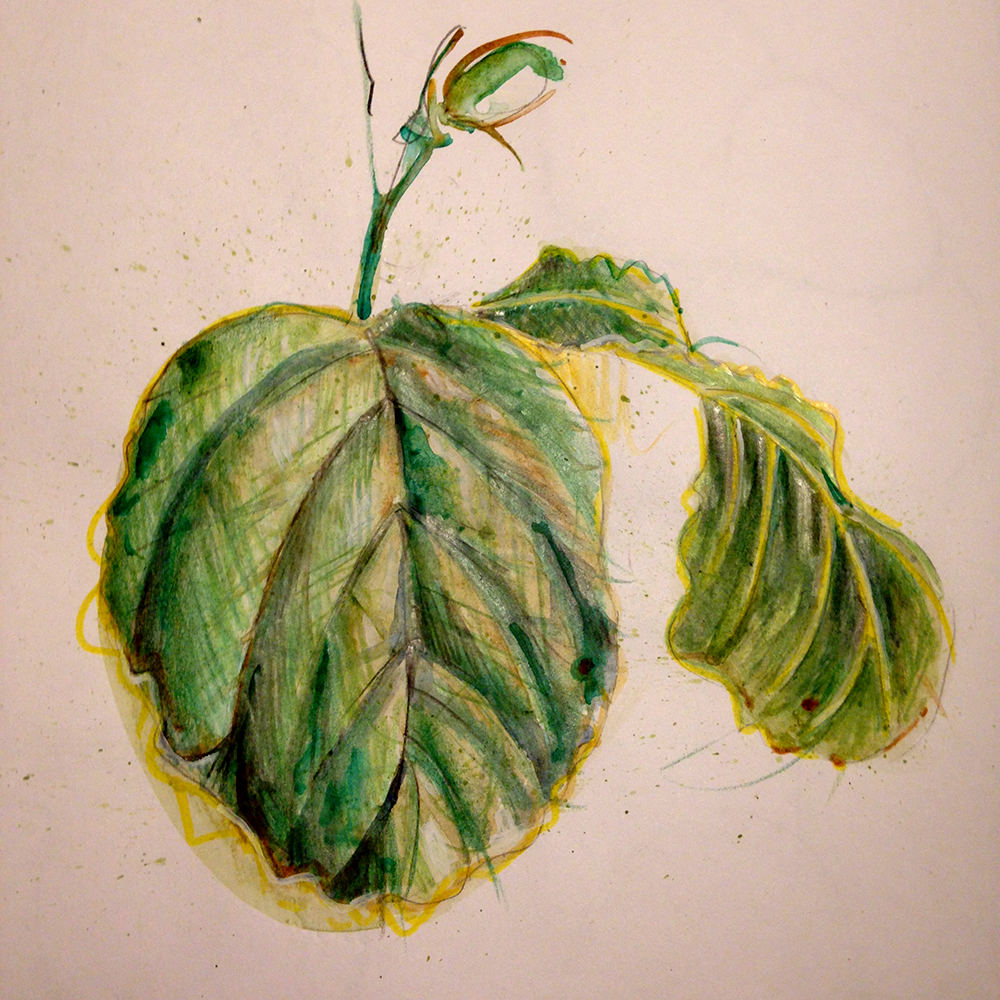 Hazel has been used by man since prehistoric times, for woven fencing and sheep hurdles, coracles, and baskets and as the framework in wattle and daub walls. Often grown as a coppice, it can be cut back every 7 or so years for a fresh stock of poles and then allowed to regrow. It was once grown alongside tall oaks - both were used for housebuilding. The yellow catkins and tiny flowers appear in February. The flowers are wind pollinated and the the much sought after nuts that form during the summer months are eaten by a variety of small mammals, birds and humans.
Hazel has been used by man since prehistoric times, for woven fencing and sheep hurdles, coracles, and baskets and as the framework in wattle and daub walls. Often grown as a coppice, it can be cut back every 7 or so years for a fresh stock of poles and then allowed to regrow. It was once grown alongside tall oaks - both were used for housebuilding. The yellow catkins and tiny flowers appear in February. The flowers are wind pollinated and the the much sought after nuts that form during the summer months are eaten by a variety of small mammals, birds and humans.
Blackthorn
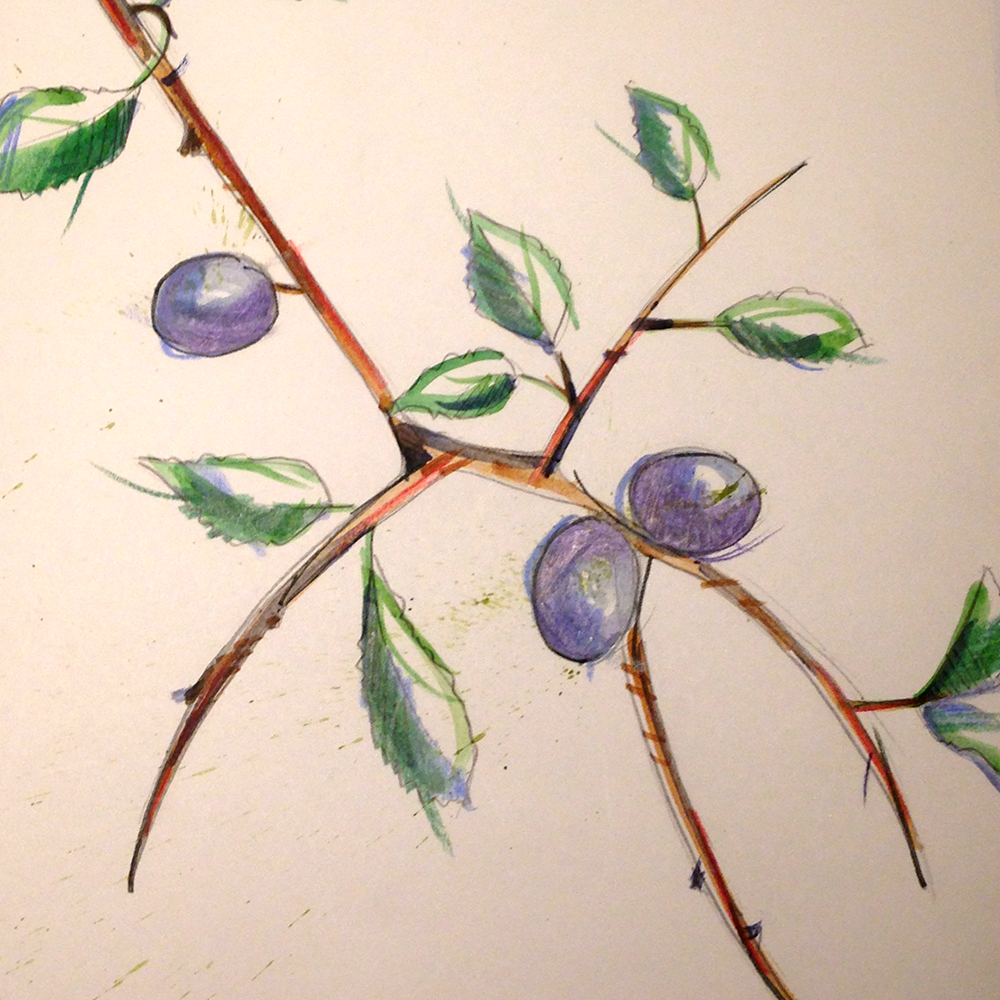 Blackthorn is a distinctive plant, with masses of white flowers on bare thorny twigs in early spring which are pollinated by insects. It can illuminate and transform a tired, cold landscape. The light yellow sapwood and brown heartwood is strong and attractive and polishes well. But as the wood never grows to a great size it was traditionally used only for marquetry as well as walking sticks.
Blackthorn is a distinctive plant, with masses of white flowers on bare thorny twigs in early spring which are pollinated by insects. It can illuminate and transform a tired, cold landscape. The light yellow sapwood and brown heartwood is strong and attractive and polishes well. But as the wood never grows to a great size it was traditionally used only for marquetry as well as walking sticks.
Hawthorn
 Hawthorn is found all over the UK and is also known as ‘May’ or ‘Quickthorn’. Hawthorn is linked to pagan medieval rites to greet the coming of the summer. It flowers in May, is pollinated by insects and has small red berries in the autumn, beloved of birds and occasionally still, made in to jam. When sheep stop grazing a hillside, Hawthorn scrub can quickly take over. The destruction of Hawthorn is said to invite peril, so we hope that planting it at Llwyn Celyn will bring the project luck.
Hawthorn is found all over the UK and is also known as ‘May’ or ‘Quickthorn’. Hawthorn is linked to pagan medieval rites to greet the coming of the summer. It flowers in May, is pollinated by insects and has small red berries in the autumn, beloved of birds and occasionally still, made in to jam. When sheep stop grazing a hillside, Hawthorn scrub can quickly take over. The destruction of Hawthorn is said to invite peril, so we hope that planting it at Llwyn Celyn will bring the project luck.
Spindle
 Spindle, is today often planted in gardens for its interesting bright pink and orange coloured autumn seeds, but was once considered useful rather than ornamental. Its wood is white (and semi mature shoots are square) and dense and was used for making spindles before the advent of the spinning wheel and for making skewers and pegs and makes great quality artists charcoal. The powdered leaves were dusted on animals (and children) to keep away lice.
Spindle, is today often planted in gardens for its interesting bright pink and orange coloured autumn seeds, but was once considered useful rather than ornamental. Its wood is white (and semi mature shoots are square) and dense and was used for making spindles before the advent of the spinning wheel and for making skewers and pegs and makes great quality artists charcoal. The powdered leaves were dusted on animals (and children) to keep away lice.
Guelder Rose
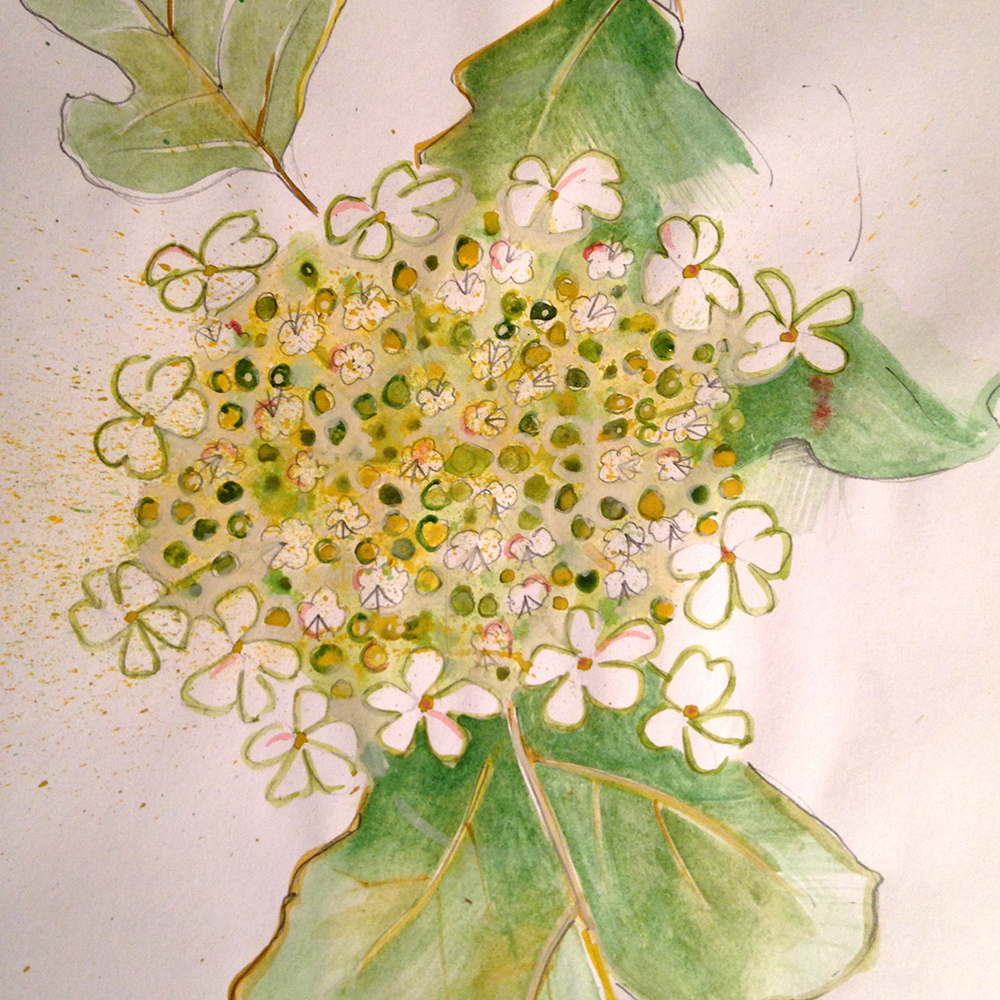 Guelder Rose was once known as Swamp Elder and in truth; this is the better name for it. Its beautiful large flower heads resemble those of the elder, and are insect pollinated. It enjoys wet boggy conditions. The name Guelder Rose should really only refer to a form that was discovered in the Dutch province of Gelderland 400 years ago and is now a popular garden plant, known as the Snowball Tree.
Guelder Rose was once known as Swamp Elder and in truth; this is the better name for it. Its beautiful large flower heads resemble those of the elder, and are insect pollinated. It enjoys wet boggy conditions. The name Guelder Rose should really only refer to a form that was discovered in the Dutch province of Gelderland 400 years ago and is now a popular garden plant, known as the Snowball Tree.
Learn more about Llwyn Celyn.